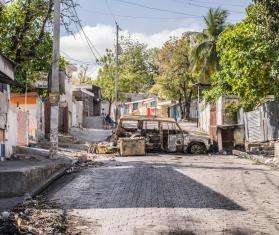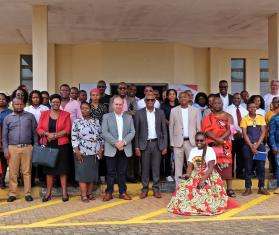MSF has completed a five-month screening project to combat sleeping sickness in DRC's Orientale Province.
Doctors Without Borders/Médecins Sans Frontières (MSF) has completed a five-month project to combat sleeping sickness in the Democratic Republic of Congo (DRC), during which more than 16,000 people were screened for the disease. The project’s results show a low prevalence of the disease in the northern Orientale region’s Bili area, where no infections were found in those screened.
Sleeping sickness, or Human African Trypanosomiasis (HAT), is a parasitic disease endemic to parts of central and western Africa that is transmitted by the bite of the tsetse fly. If left untreated, this neglected tropical disease is fatal. DRC is home to 80 percent of all reported cases of sleeping sickness worldwide, and Orientale Province, where the screening was carried out, is considered to be one of the most active areas in the world.
From March 2013 to August 2013, the MSF team traveled hundreds of kilometers, targeting villages in Haut and Bas Uele districts, where sleeping sickness rates have historically been high. The project posed a number of logistical challenges, including weeks of carrying a mobile laboratory, complete with microscopes and centrifuges, through dense forests by motorbike to reach people in remote areas. Education campaigns were held in communities beforehand to encourage people to come to the screening sites.
“Beyond the logistics, making sure we had good coverage was a challenge,” said MSF laboratory technician Barrie Rooney. “For many, especially farmers and fishermen, coming to the screening meant they had to stay in town for the day instead of going out to work. It was really important to sensitize this group because farmers and fishermen are the most at risk of being exposed to tsetse flies, which gather on rivers and in farming areas.”
While no cases of sleeping sickness were found in the region, the MSF team also contributed to treating other life-threatening diseases. To gain acceptance among the population, and to help fill the health care gap in the region, a five-bed emergency room was opened in the Bili Hospital during MSF’s presence in the region. Ninety-four patients were admitted and treated for various health problems. Because malaria is endemic in the area, MSF teams also provided outpatient testing, consultation, and treatment for the disease at a local hospital in Bili, testing pregnant women and children under the age of five for the disease during active HAT screenings. Patients diagnosed with complicated or severe forms of malaria were referred to hospital. In total, MSF teams tested 4,309 people for malaria. Seventy-seven percent of those under the age of five tested positive. Sixty-nine percent of those tested over the age of five were also found to be carrying the disease.
“The aim of the team was to go where no one else had been to test and treat for sleeping sickness,” said MSF medical doctor Katharina Totz. “And while the results were good news for the people of Bili town, in that there were no cases, we know there are still people dying of the disease and our goal is to continue to find them and treat them.”
MSF has been actively engaged in controlling and treating sleeping sickness for the past 25 years. Recently, MSF implemented a new approach to tackle sleeping sickness: the Mobile HAT Team. The international team, made up of laboratory technicians, medical doctors, logisticians, and project coordinators, work together with national doctors, nurses, laboratory staff, logisticians, and community outreach workers in countries with a high prevalence of sleeping sickness to implement active village screening and treatment, along with training, surveillance, and advocacy. The aim is to save lives and work together with national programs toward to eliminate the disease. So far, the team has worked in DRC, Central African Republic, Republic of Congo, and South Sudan. MSF also advocates both nationally and internationally for increased access to diagnosis and treatment and better research and development for this neglected disease.





